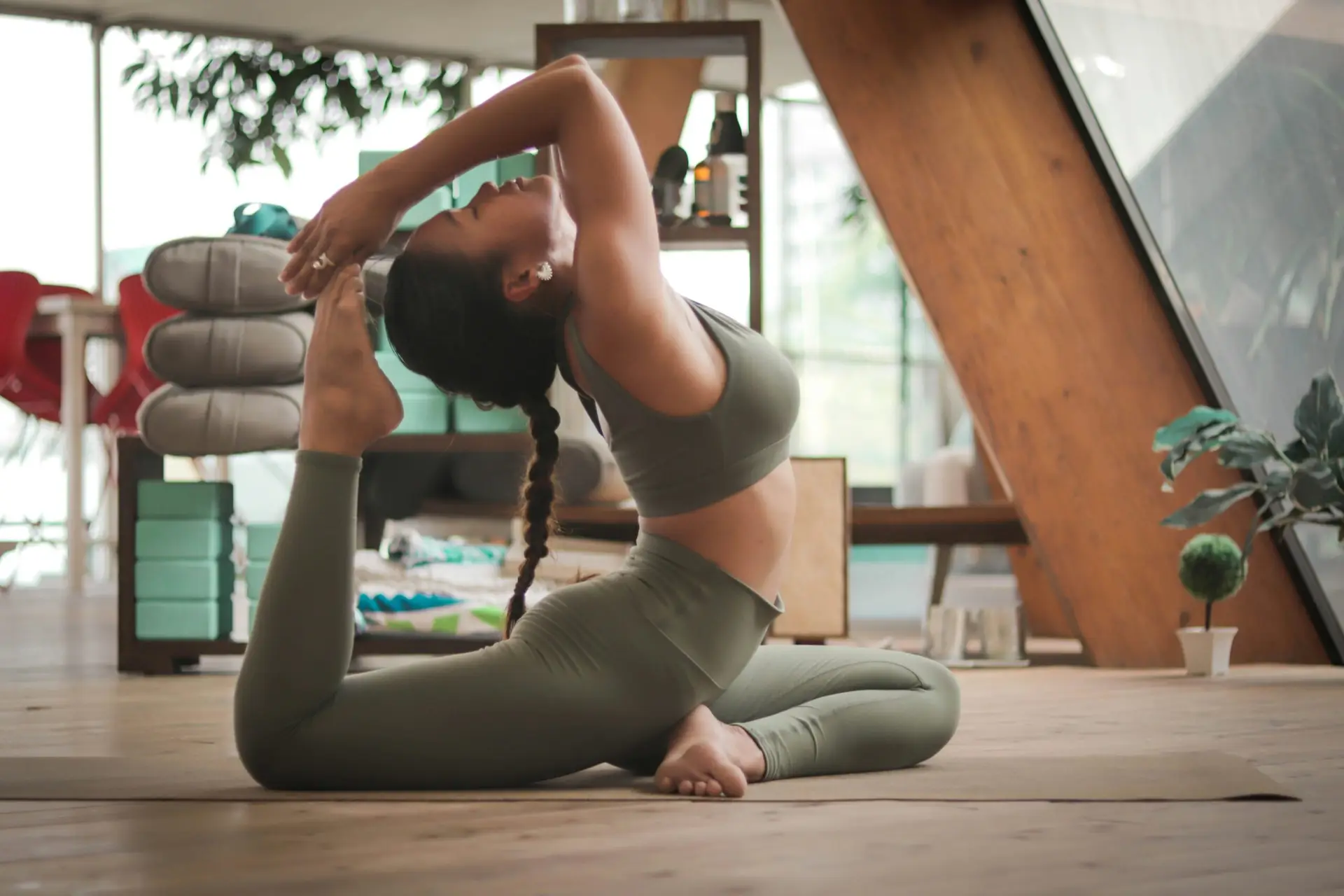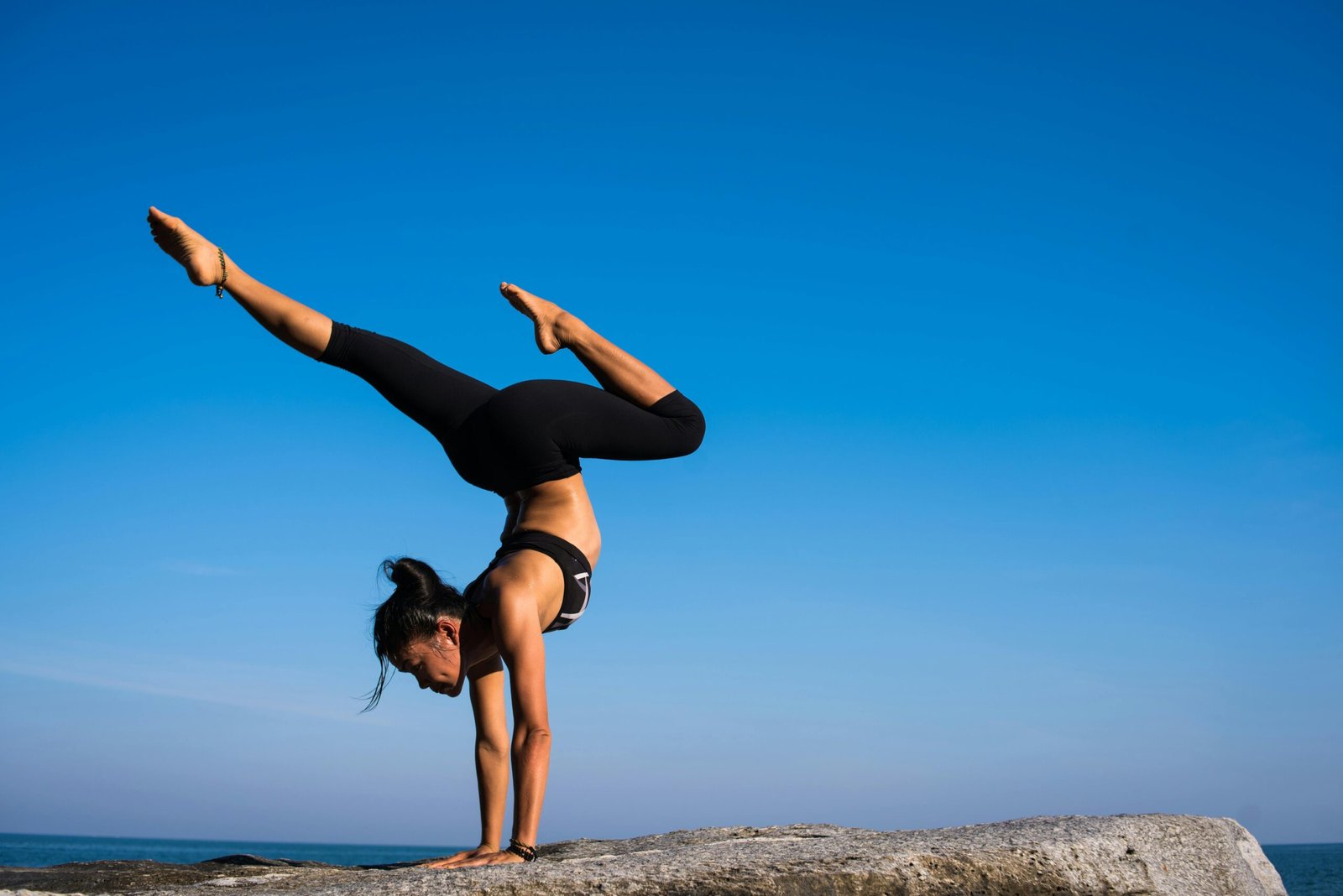Best Exercises for a Full-Body Workout at Home: A Roundup of Effective Exercises that Target All Major Muscle Groups, Suitable for Home Workouts
In today’s fast-paced world, maintaining a balanced and healthy lifestyle can be challenging. The concept of a full-body workout at home offers an accessible and convenient solution for those looking to stay fit without the need for a gym membership. A full-body workout targets all major muscle groups, ensuring a comprehensive approach to fitness that can yield significant health benefits. These routines are designed to work muscles in the upper body, lower body, and core, promoting overall strength and endurance.
One of the primary advantages of home workouts is their flexibility. Without the need to travel to a gym, individuals can save valuable time and incorporate exercise into their daily routines more seamlessly. This convenience is especially beneficial for busy professionals, parents, or anyone with a hectic schedule. Additionally, home workouts can be tailored to fit any fitness level, from beginners to advanced athletes, making them an inclusive option for everyone.
Contrary to common belief, home workouts can be just as effective as those performed in a gym setting. With the right exercises and proper form, one can achieve impressive results. Utilizing bodyweight exercises, resistance bands, or even household items can provide the necessary resistance and variety to keep workouts engaging and productive. Moreover, the privacy of working out at home can often lead to greater consistency, as individuals may feel more comfortable and less self-conscious.
Incorporating full-body workouts into your routine not only enhances physical health but also supports mental well-being. Regular exercise has been shown to reduce stress, improve mood, and boost overall energy levels. By embracing the convenience and effectiveness of home workouts, individuals can achieve a balanced and healthy lifestyle, even amidst the busiest of schedules.
Warm-Up: Preparing Your Body for Exercise
Warming up before any workout is a crucial step that should not be overlooked. A proper warm-up routine prepares the body for the physical exertion to come, helping to prevent injuries and enhance overall workout performance. By gradually increasing your heart rate and blood flow to the muscles, you ensure that your body is ready to handle more intense physical activities.
A comprehensive warm-up should last between 5 to 10 minutes and include both dynamic stretches and light cardio exercises. Dynamic stretches are particularly effective because they involve active movements that help increase the range of motion and flexibility. These stretches prepare your muscles and joints for the tasks ahead, reducing the risk of strains and sprains.
To start your warm-up, consider incorporating a series of dynamic stretches. Begin with arm circles to loosen up your shoulder joints: extend your arms out to the sides and make small circles, gradually increasing the size. Perform 10 circles in each direction. Next, move on to leg swings. Stand on one leg, holding onto a wall for balance if needed, and swing your other leg forward and backward. Complete 10 swings per leg.
Following dynamic stretches, integrate light cardio exercises to elevate your heart rate. Jumping jacks are an excellent choice: start with your feet together and arms at your sides, then jump while spreading your legs apart and bringing your arms overhead. Return to the starting position and repeat for 30 seconds. High knees are another effective exercise: jog in place while lifting your knees as high as possible, aiming to touch your palms placed at hip height. Continue for 30 seconds.
Incorporating these warm-up exercises into your routine not only prepares your body physically but also mentally gears you up for the workout session. A well-rounded warm-up significantly enhances your health by optimizing your body’s readiness and reducing the likelihood of injuries, setting the stage for a more effective and enjoyable workout.
Upper Body Exercises
Strengthening the upper body is essential for maintaining overall health and fitness. Effective upper body exercises can be conveniently performed at home using minimal equipment or household items. These exercises target the arms, shoulders, chest, and back, providing a comprehensive workout for these critical muscle groups.
Push-Ups: Push-ups are a foundational exercise that works the chest, shoulders, triceps, and core. Begin in a plank position with hands slightly wider than shoulder-width apart. Lower your body until your chest nearly touches the floor, then push back up. For beginners, perform push-ups on the knees. Advanced variations include declined push-ups, where the feet are elevated on a chair or step.
Tricep Dips: Tricep dips target the triceps effectively. Sit on the edge of a sturdy chair or bench, placing hands next to your hips. Slide off the edge, supporting yourself with your arms. Lower your body until your elbows form a 90-degree angle, then push back up. For increased difficulty, extend the legs fully or place them on another chair.
Shoulder Taps: Shoulder taps enhance shoulder stability and core strength. Start in a plank position. While maintaining a stable core, lift one hand to touch the opposite shoulder, then alternate. To reduce intensity, perform the taps in a knee plank position. Ensure minimal hip movement to maximize the exercise’s effectiveness.
Rows Using Resistance Bands or Household Items: Rows are crucial for strengthening the back. If resistance bands are available, anchor them securely, and pull the bands towards your torso. Alternatively, use household items like water bottles or canned goods. Bend at the waist with a flat back, holding the items in each hand. Pull your elbows back, squeezing the shoulder blades together, then lower slowly.
Integrating these exercises into your routine will significantly enhance upper body strength and overall health. Always focus on maintaining proper form to prevent injuries and achieve optimal results. Adjust the exercises’ intensity according to your fitness level, ensuring a challenging yet manageable workout.
Lower Body Exercises
Effective full-body workouts should incorporate exercises that strengthen the lower body, as these muscles play a crucial role in overall body strength and stability. Key muscle groups targeted in lower body exercises include the quadriceps, hamstrings, glutes, and calves. Strengthening these muscles not only improves physical performance but also enhances everyday functional movements.
Squats are a fundamental lower body exercise that engages multiple muscle groups. To perform a squat, stand with your feet shoulder-width apart, and lower your body by bending your knees and hips as if sitting back into a chair. Ensure your chest remains upright and your knees do not extend past your toes. For beginners, bodyweight squats are recommended, while more advanced individuals can add resistance using dumbbells or resistance bands.
Lunges are another versatile exercise that targets the quadriceps, hamstrings, and glutes. To execute a lunge, step forward with one leg and lower your hips until both knees are bent at a 90-degree angle. Your front knee should align with your ankle, and your back knee should hover just above the ground. Alternate legs to ensure balanced muscle development. Modifications, such as stationary lunges, can help those with limited mobility.
Glute bridges focus primarily on the glutes and hamstrings, promoting hip stability. To begin, lie on your back with your knees bent and feet flat on the floor. Lift your hips towards the ceiling by squeezing your glutes and maintaining a straight line from your shoulders to your knees. Lower your hips back down with control. For added resistance, place a weight on your pelvis or use resistance bands.
Calf raises are essential for strengthening the calves and improving ankle stability. Stand with your feet hip-width apart and slowly raise your heels off the ground, standing on your toes. Hold the position briefly before lowering your heels back down. Beginners can use a wall for support, while more advanced individuals can perform single-leg calf raises for added intensity.
Incorporating these lower body exercises into your home workout routine is vital for enhancing overall health and fitness. Proper form and gradual progression are key to maximizing benefits and minimizing injury risk. By targeting the quadriceps, hamstrings, glutes, and calves, you will build a strong foundation that supports both athletic performance and daily activities.
Core Strengthening Exercises
Maintaining a strong core is essential for overall fitness and stability. A well-developed core supports your spine, improves posture, and enhances your ability to perform daily activities with ease. Core exercises are crucial for athletes and fitness enthusiasts aiming to optimize their health and performance.
One of the most effective exercises for core strengthening is the plank. This exercise engages the abdominal muscles, obliques, and lower back. To perform a plank, start in a push-up position, ensuring your body forms a straight line from head to heels. Engage your core by pulling your navel towards your spine and hold this position, focusing on steady breathing and maintaining form.
Russian twists are another excellent exercise targeting the obliques. Begin by sitting on the floor, knees bent, and feet flat. Lean back slightly, keeping your back straight, and hold a weight or a household item like a water bottle with both hands. Twist your torso to the right, then to the left, moving the weight across your body while keeping your core engaged.
Bicycle crunches are highly effective for the abdominal muscles and obliques. Lie flat on your back with your hands behind your head and legs lifted off the ground. Bring your right elbow towards your left knee while straightening your right leg, then switch sides in a pedaling motion. Ensure to breathe steadily and avoid pulling on your neck.
Leg raises are beneficial for strengthening the lower abdominal muscles. Lie flat on your back with your hands under your hips for support. Lift your legs together towards the ceiling, keeping them straight. Lower them back down slowly without letting them touch the floor. Focus on controlling the movement and maintaining a steady breathing pattern.
Proper breathing techniques and maintaining good form are paramount to avoid strain and maximize the effectiveness of these exercises. Incorporate these core-strengthening exercises into your routine to build a resilient core, contributing to overall health and fitness.
Full-Body Combination Exercises
Full-body combination exercises are an efficient way to engage multiple muscle groups simultaneously, making them an excellent choice for a comprehensive workout routine at home. These exercises not only target various muscles but also elevate your heart rate, enhance coordination, and provide a more intense workout in a shorter duration, ultimately benefiting your overall health.
One prime example is the burpee, a dynamic exercise that involves a squat, jump, and push-up. This movement works the chest, shoulders, triceps, quads, hamstrings, and core, contributing to cardiovascular health and muscular endurance. By performing burpees at a high intensity, you can achieve a full-body workout that boosts heart health and calorie burn.
Similarly, mountain climbers are another effective combination exercise. This movement mimics a climbing motion, requiring you to alternate driving your knees towards your chest while maintaining a plank position. Mountain climbers effectively target the abs, shoulders, chest, and legs, offering a robust workout that enhances cardiovascular fitness and muscular coordination.
Thrusters, which combine a front squat with an overhead press, are also highly beneficial. This exercise works the legs, glutes, core, and shoulders, providing a comprehensive strength and conditioning workout. Thrusters can be performed with dumbbells, kettlebells, or even household items like water bottles, making them adaptable to varying home environments.
To adjust the intensity of these exercises based on fitness levels, consider the following variations. For burpees, beginners can eliminate the push-up or perform the movement at a slower pace. Advanced individuals may add a tuck jump at the end of each burpee for an added challenge. For mountain climbers, beginners can step their feet in and out rather than hopping, while advanced exercisers can increase the speed or incorporate a twist to engage obliques. Lastly, for thrusters, adjusting the weight or number of repetitions can help tailor the workout to individual capabilities.
Incorporating these full-body combination exercises into your home workout routine ensures that you engage various muscle groups effectively, improve coordination, and achieve a higher intensity workout in less time, contributing positively to your overall health and fitness.
Cool-Down and Stretching
After an intense full-body workout, it is essential to incorporate a cool-down routine to gradually lower your heart rate and help your muscles transition back to a resting state. Cooling down aids in the prevention of muscle stiffness and soreness, promoting overall muscle health and flexibility. A proper cool-down routine should last around 5-10 minutes and focus on static stretching, targeting the major muscle groups you have worked during your session.
Begin with gentle cardio to bring your heart rate down. This can include walking in place or slowly marching, lasting for about 2-3 minutes. Once your heart rate has decreased, proceed with static stretches. Here is a step-by-step guide to an effective cool-down routine:
1. Hamstring Stretch: Sit on the floor with one leg extended and the other bent, foot touching your inner thigh. Reach towards your toes on the extended leg, holding for 20-30 seconds. Repeat on the other leg.
2. Quadriceps Stretch: Stand on one leg, pulling the opposite foot towards your buttocks, keeping your knees together. Hold for 20-30 seconds and switch sides.
3. Chest Stretch: Stand tall, clasp your hands behind your back, and gently lift your arms. Hold for 20-30 seconds to stretch your chest and shoulders.
4. Shoulder Stretch: Bring one arm across your body and use your opposite hand to press the arm closer to your chest. Hold for 20-30 seconds and repeat on the other side.
5. Calf Stretch: Stand facing a wall, place one foot behind the other, and press your back heel into the floor. Hold for 20-30 seconds and switch legs.
6. Lower Back Stretch: Lie on your back, pull your knees towards your chest, and gently rock side to side for 20-30 seconds.
These stretches will not only enhance flexibility but also aid in reducing muscle soreness, ensuring your body is well-prepared for subsequent workouts. Regularly incorporating a cool-down routine into your exercise regimen promotes better muscle recovery and overall health, keeping you fit and ready for your next session.
Creating a Balanced Home Workout Routine
Designing a balanced full-body workout routine at home is essential for achieving optimal health and fitness. Consistency is a critical factor; adhering to a regular exercise schedule ensures steady progress and long-term results. Equally important is the incorporation of rest days to allow muscles to recover and grow stronger, reducing the risk of overtraining and injury. Progressive overload, which involves gradually increasing the intensity of workouts, is necessary to continue making gains in strength and endurance.
For beginners, a simple routine might include three days of exercise each week with a day of rest between sessions. A sample schedule could be:
Monday: Bodyweight squats, push-ups, planks
Wednesday: Lunges, dumbbell rows, sit-ups
Friday: Glute bridges, shoulder presses, Russian twists
Intermediate exercisers can aim for four to five workout days per week, incorporating a mix of strength and cardiovascular exercises. A possible plan is:
Monday: Squats, bench presses, deadlifts
Tuesday: HIIT (High-Intensity Interval Training) session
Thursday: Pull-ups, overhead presses, leg raises
Saturday: Cardio session (running, cycling, or jump rope)
Advanced fitness enthusiasts may benefit from more frequent and varied workouts, such as six days of training with a focus on different muscle groups each day. An example schedule might be:
Monday: Leg day (squats, lunges, leg presses)
Tuesday: Chest and triceps (bench presses, tricep dips)
Wednesday: Back and biceps (deadlifts, bicep curls)
Thursday: Cardio and core (HIIT, planks)
Friday: Shoulders and abs (shoulder presses, Russian twists)
Saturday: Full-body workout (combination of compound movements)
Listening to one’s body is paramount; if experiencing pain or excessive fatigue, it may be necessary to adjust the routine or take additional rest days. This approach helps maintain a sustainable workout regimen that promotes overall health while minimizing the risk of injury.
Share this content:




 Italiano
Italiano English
English Español
Español